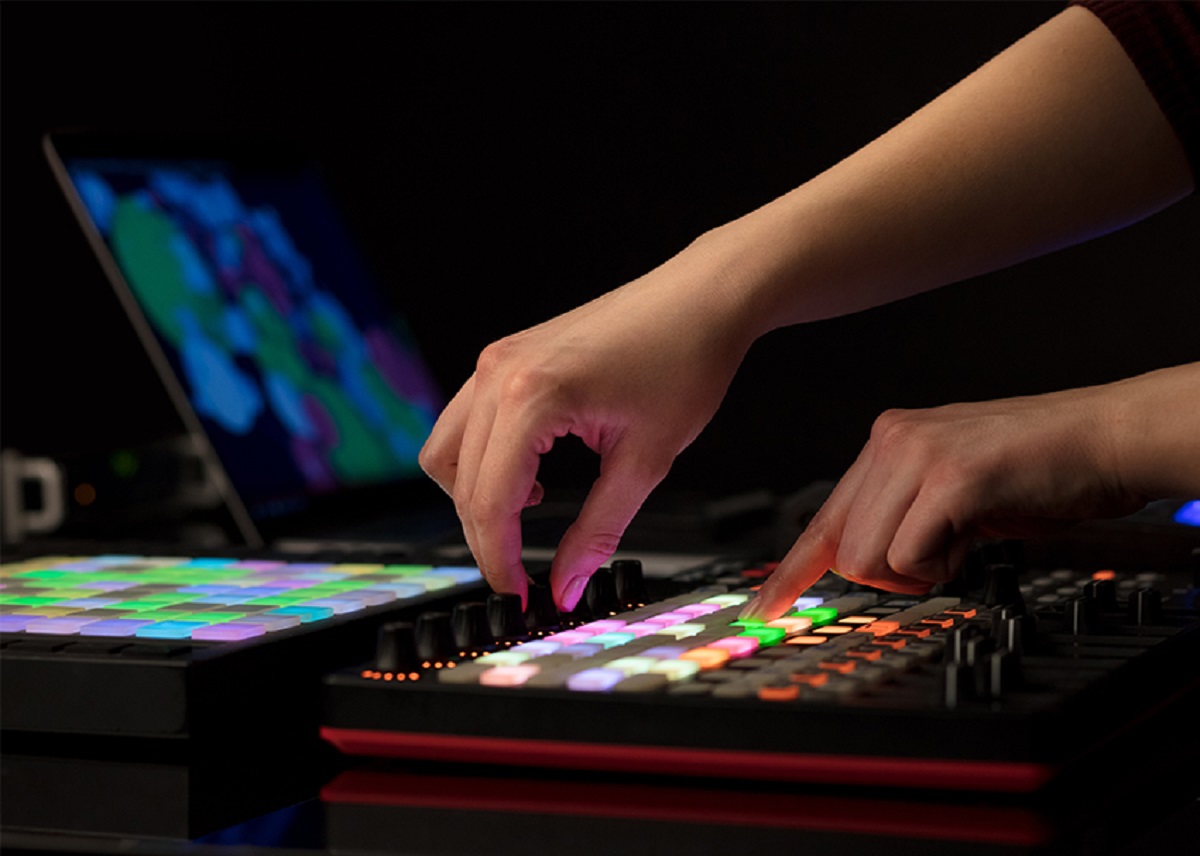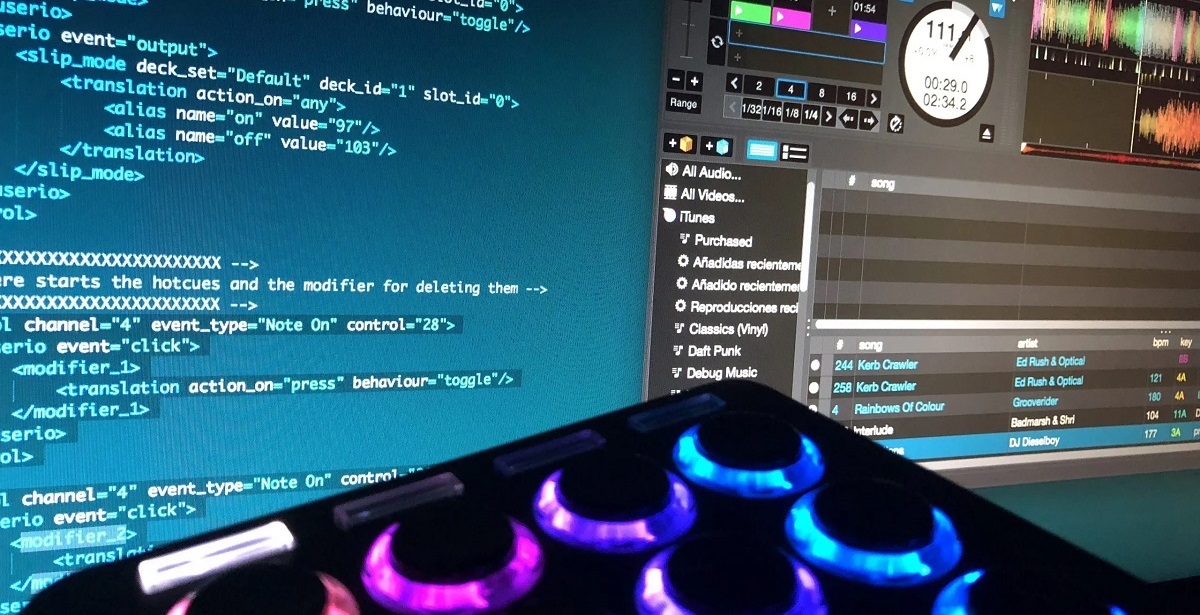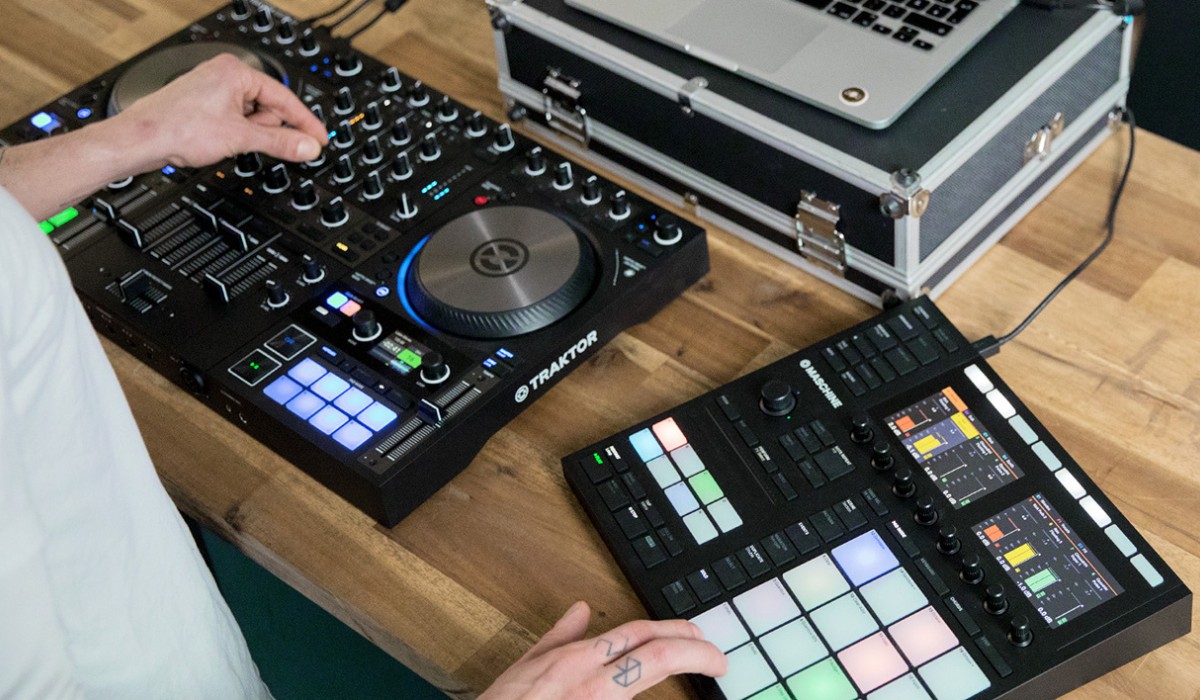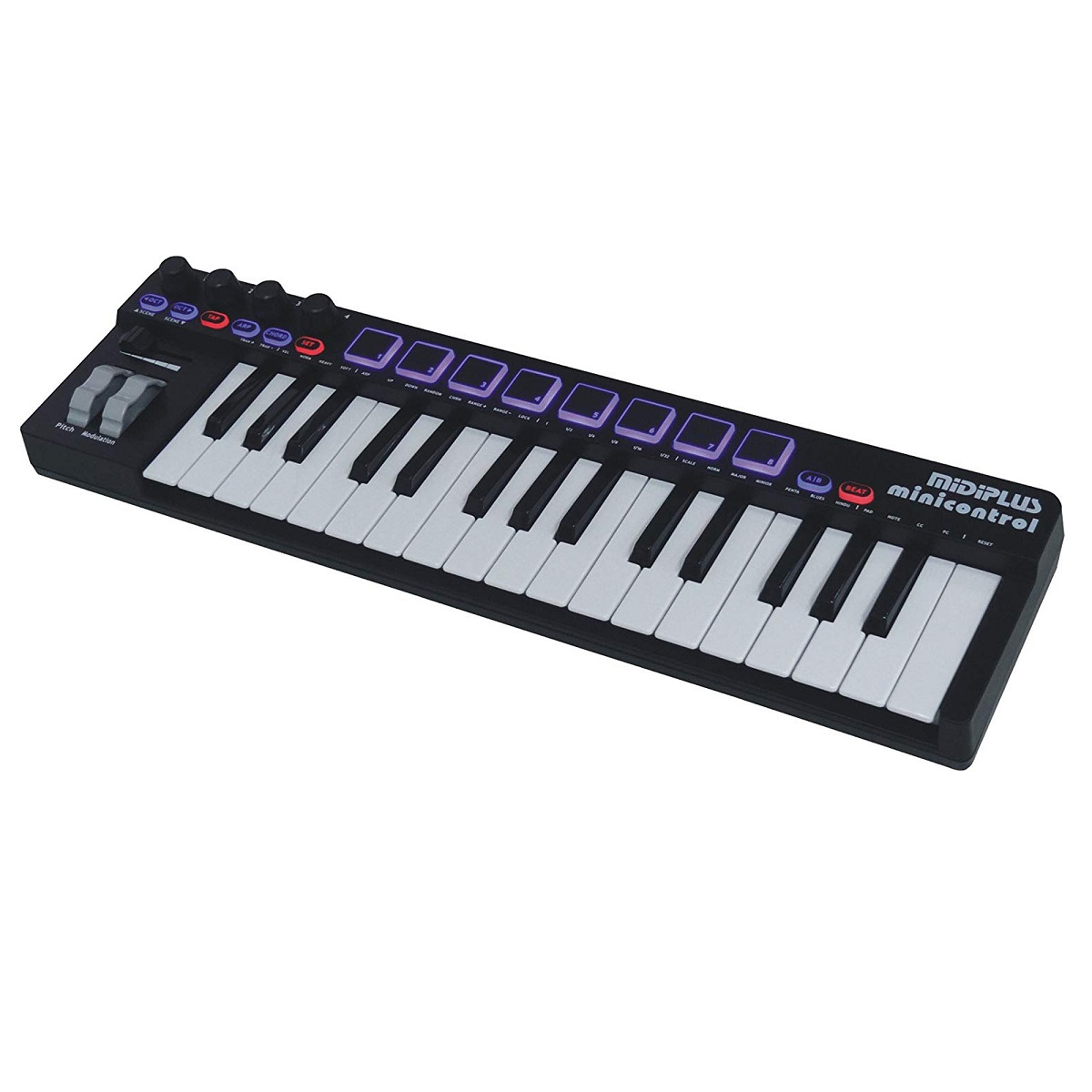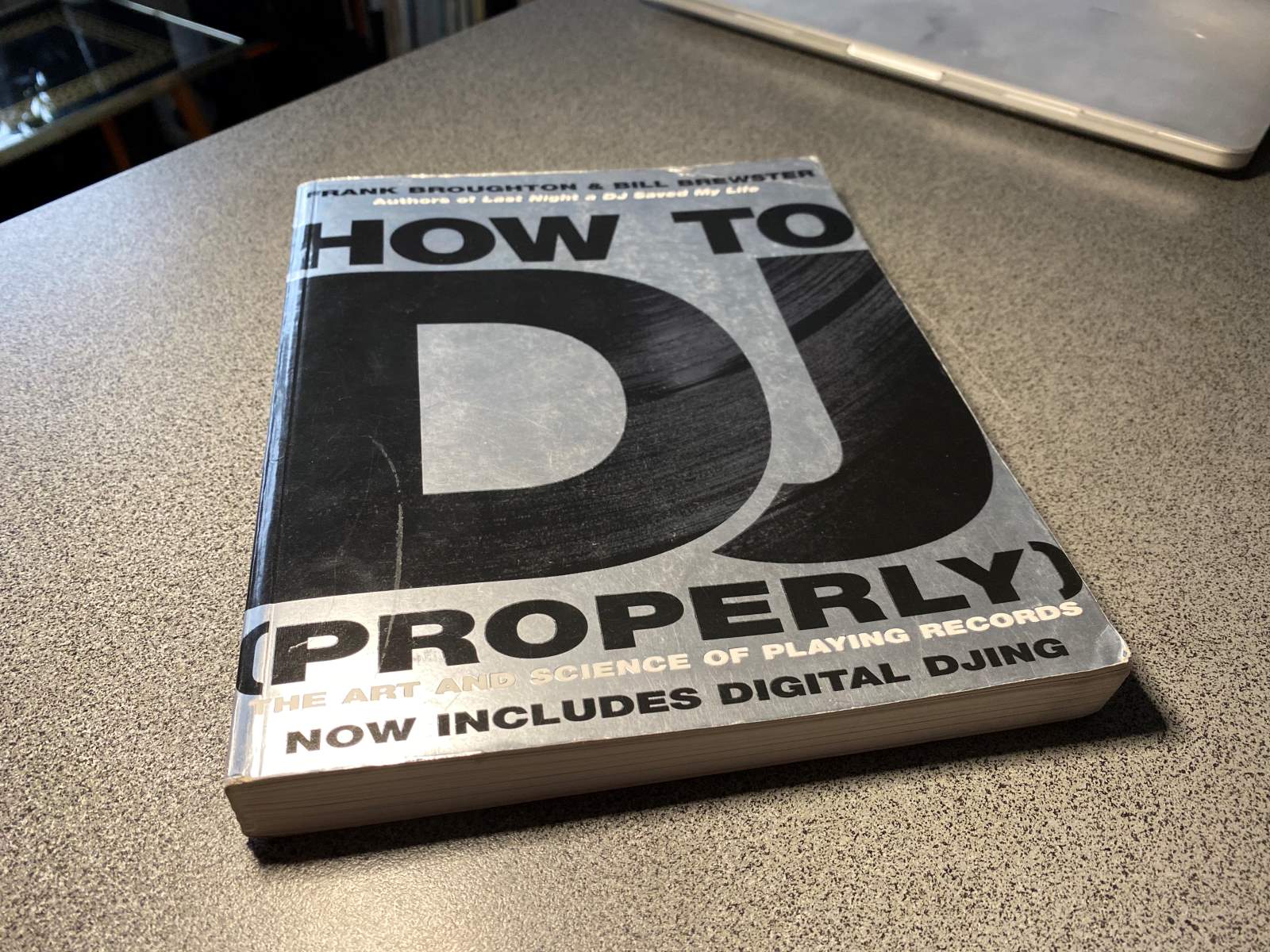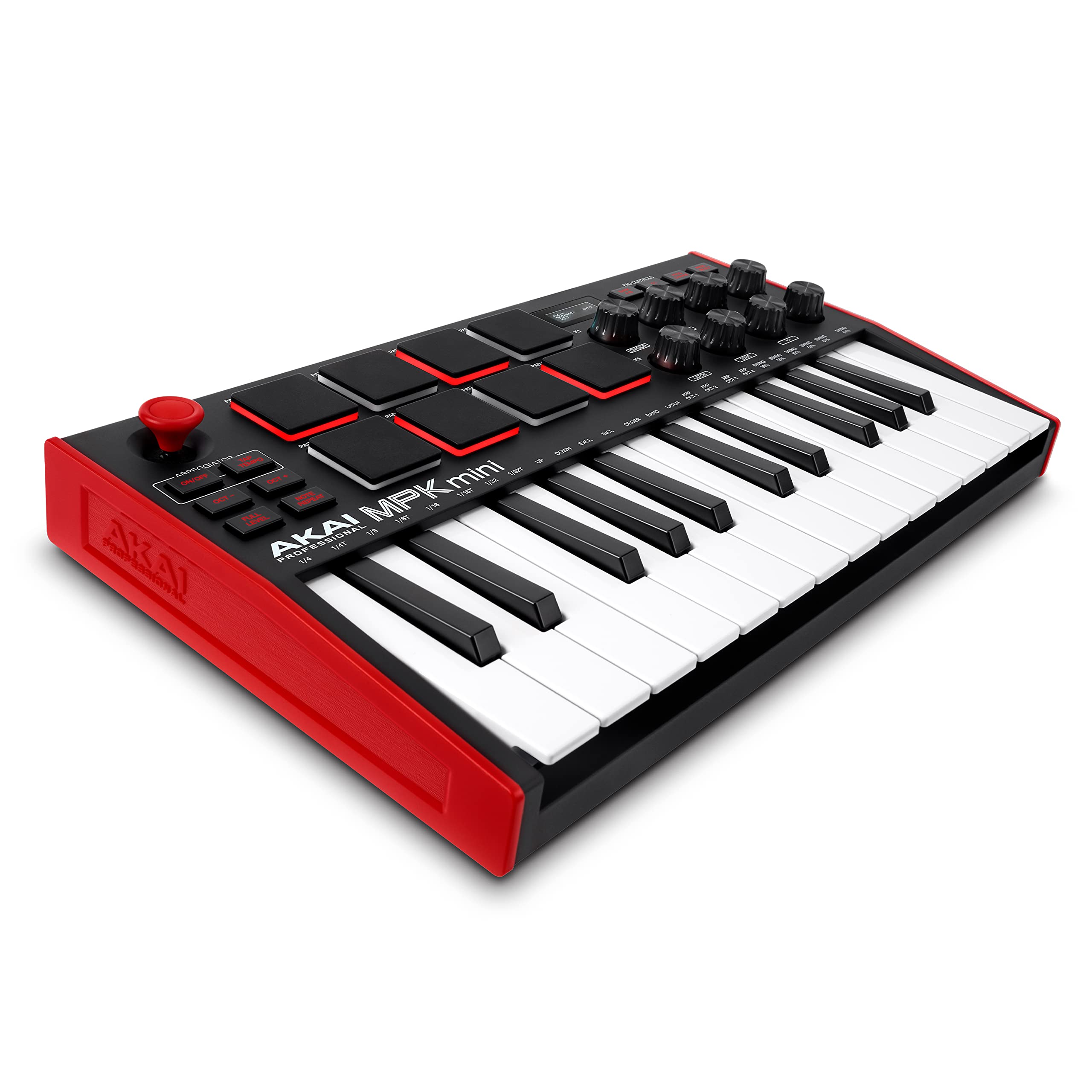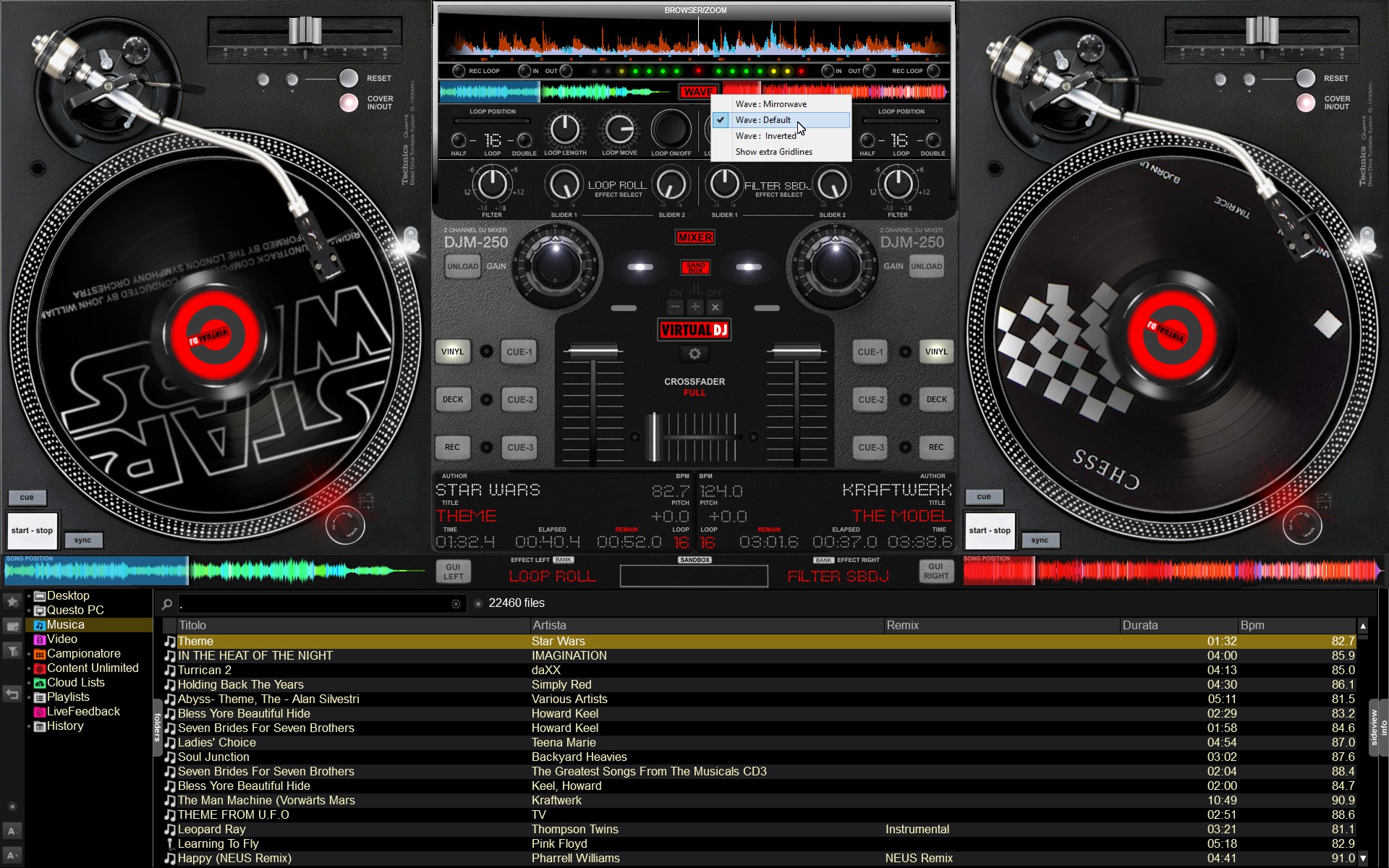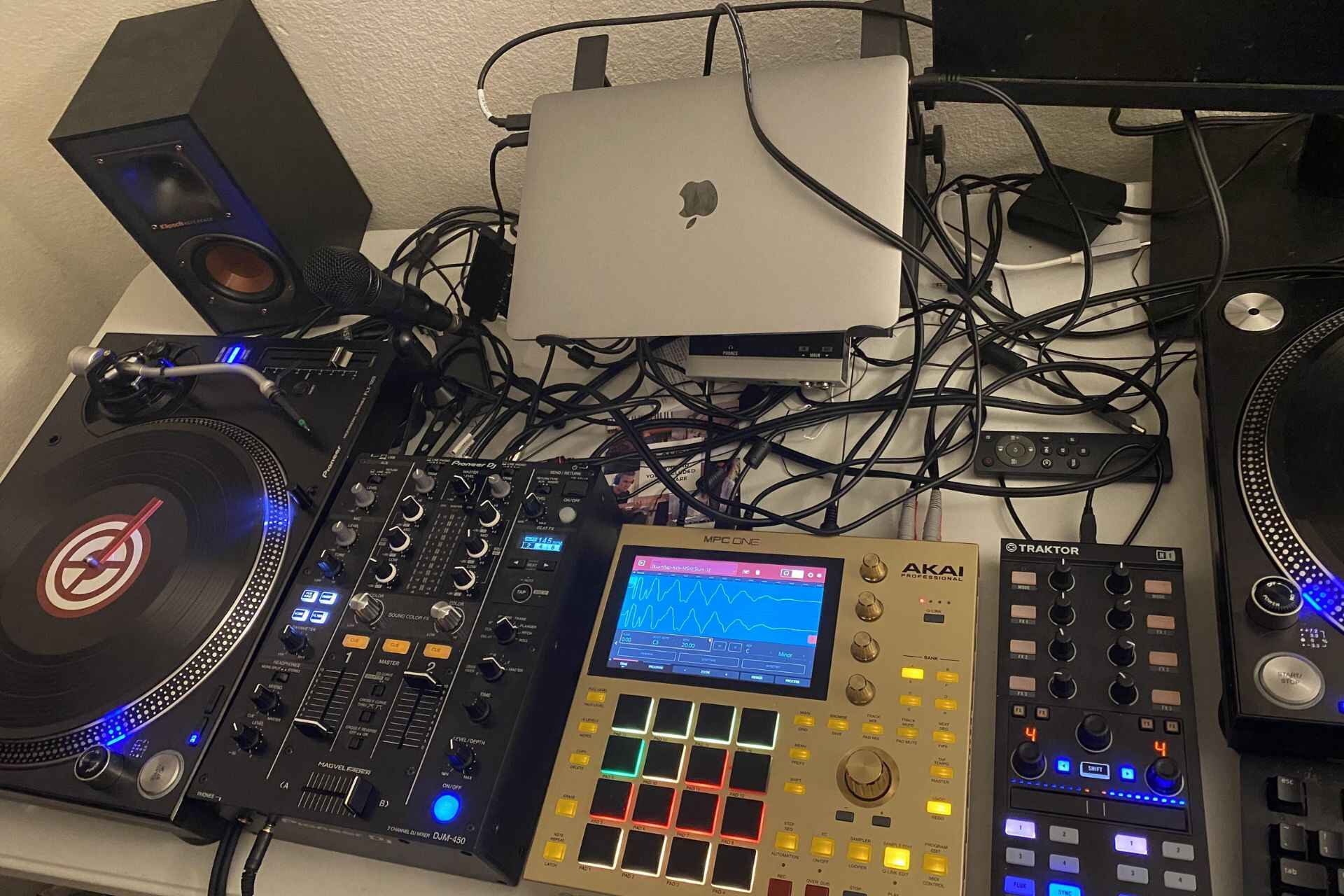Introduction
Are you ready to take your DJing skills to the next level? If you're looking for a creative and versatile way to mix and manipulate music, using a MIDI keyboard for DJing could be the perfect solution. This innovative approach allows you to harness the power of technology to craft seamless transitions, trigger samples, and control effects with the touch of a key.
In the world of digital music, the MIDI keyboard has become an indispensable tool for DJs who seek to elevate their performances. By integrating this versatile instrument into your setup, you can unlock a world of possibilities, from fluid mixing to dynamic live performances. Whether you're a seasoned DJ or just starting out, incorporating a MIDI keyboard into your arsenal can revolutionize the way you interact with your music.
With its array of assignable knobs, faders, and pads, a MIDI keyboard provides a tactile and intuitive interface that empowers you to manipulate your tracks in real time. This hands-on approach not only enhances your creative expression but also fosters a deeper connection with your audience as they witness the magic unfolding before their eyes.
In this comprehensive guide, we'll delve into the world of DJing with a MIDI keyboard, exploring everything from selecting the right MIDI keyboard for your needs to setting it up and seamlessly integrating it with your DJ software. We'll also uncover the myriad ways you can leverage your MIDI keyboard to control effects, trigger samples, and infuse your sets with a newfound sense of dynamism.
So, if you're ready to embark on a journey that will transform the way you approach DJing, fasten your seatbelt and get ready to unlock the full potential of your MIDI keyboard. By the end of this guide, you'll be equipped with the knowledge and skills to harness the true power of this versatile instrument and elevate your DJing to new heights. Let's dive in and discover the endless possibilities that await you in the realm of MIDI keyboard DJing.
Choosing the Right MIDI Keyboard for DJing
When it comes to selecting the ideal MIDI keyboard for DJing, there are several factors to consider to ensure that it aligns with your specific needs and preferences. The market offers a wide array of MIDI keyboards, each boasting unique features and capabilities, so it’s essential to carefully evaluate your options before making a decision.
One of the first considerations is the size and form factor of the MIDI keyboard. For DJing purposes, a compact and portable keyboard is often preferred, as it allows for easy integration into your existing setup and facilitates seamless transportation for live performances. Additionally, the number and variety of pads, knobs, and faders should be taken into account, as these elements play a crucial role in controlling various aspects of your DJ software and performance.
Another crucial aspect to consider is the keybed type. For DJs who prioritize performance and expressive playability, a MIDI keyboard with semi-weighted or synth-action keys may be preferable, as they provide a responsive and dynamic playing experience. On the other hand, those who require precise triggering of samples and loops may opt for a keyboard with velocity-sensitive pads, offering enhanced tactile control over their performance.
Furthermore, connectivity options should not be overlooked. Ensure that the MIDI keyboard you choose seamlessly integrates with your existing DJ setup, whether it’s through USB, MIDI, or wireless connectivity. This allows for effortless communication between your keyboard and DJ software, enabling you to focus on crafting seamless mixes and captivating performances without technical limitations.
Lastly, consider the compatibility of the MIDI keyboard with your preferred DJ software. While most MIDI keyboards are designed to be versatile and compatible with a wide range of software applications, it’s crucial to verify that your chosen keyboard is fully supported by your preferred DJ platform, ensuring a smooth and intuitive integration that enhances your workflow.
By carefully evaluating these factors and conducting thorough research, you can confidently select a MIDI keyboard that perfectly complements your DJing style and workflow. Remember, the right MIDI keyboard is not just a tool; it’s an extension of your creativity and expression, empowering you to deliver electrifying performances and unforgettable musical experiences.
Setting Up Your MIDI Keyboard for DJing
Once you’ve chosen the perfect MIDI keyboard for your DJing endeavors, the next step is to set it up for seamless integration into your DJ setup. This process involves establishing a solid connection between your MIDI keyboard and your DJ software, ensuring that all the features and controls are mapped and functioning as intended.
The first and most crucial step is to connect your MIDI keyboard to your computer or DJ controller using the appropriate cables or wireless connectivity. Whether it’s a USB connection, MIDI cables, or wireless Bluetooth pairing, ensure that the communication between your keyboard and your DJ setup is stable and reliable, minimizing the risk of performance interruptions during your sets.
Once the physical connection is established, it’s time to configure your MIDI keyboard within your DJ software. Most modern DJ software applications offer comprehensive MIDI mapping capabilities, allowing you to assign specific functions and controls on your keyboard to various parameters within the software. This customization empowers you to tailor the keyboard’s interface to align with your preferred workflow and performance style.
Mapping the essential controls, such as crossfaders, EQ knobs, and effects parameters, is a fundamental aspect of setting up your MIDI keyboard for DJing. By defining these mappings within your DJ software, you can seamlessly transition between tracks, manipulate audio effects, and craft intricate mixes with the touch of a button or turn of a knob, elevating your performance to new heights.
Furthermore, it’s essential to ensure that the MIDI signals from your keyboard are transmitted and received accurately by your DJ software. This involves verifying the MIDI input and output settings within the software’s preferences, confirming that the assigned controls on your keyboard correspond to the intended functions within the application.
As you finalize the setup of your MIDI keyboard for DJing, take the time to test and calibrate the controls to guarantee optimal responsiveness and accuracy during your performances. This may involve adjusting sensitivity settings, fine-tuning the MIDI mappings, and familiarizing yourself with the tactile feedback of the keyboard’s pads, knobs, and faders to ensure a seamless and intuitive performance experience.
By meticulously configuring and calibrating your MIDI keyboard within your DJ software, you can unleash its full potential as a versatile and expressive tool for crafting captivating mixes and delivering electrifying performances. With the setup process complete, you’re now poised to harness the power of your MIDI keyboard and embark on an exhilarating journey of musical creativity and innovation.
Mapping Your MIDI Keyboard to DJ Software
Mapping your MIDI keyboard to your DJ software is a pivotal step that empowers you to harness the full potential of the instrument, seamlessly integrating it into your performance workflow. By customizing the MIDI mappings, you can assign specific functions and controls on your keyboard to manipulate various parameters within the DJ software, offering a hands-on and intuitive approach to crafting dynamic mixes and captivating performances.
The process of mapping your MIDI keyboard to your DJ software begins with a thorough understanding of the software’s MIDI mapping capabilities. Most modern DJ applications provide comprehensive tools that enable you to define and customize the behavior of your MIDI keyboard, allowing you to assign specific knobs, faders, pads, and keys to control essential aspects of your DJ performance.
When mapping your MIDI keyboard, consider the essential controls that are integral to your DJing style, such as crossfaders, volume sliders, EQ knobs, and effect parameters. These controls serve as the foundation for crafting seamless transitions, manipulating audio elements, and infusing your sets with creative flair. By mapping these functions to your MIDI keyboard, you can execute precise and expressive control over your performance with unparalleled dexterity.
Furthermore, many MIDI keyboards feature assignable pads and buttons that can be utilized to trigger samples, loops, and cue points within your DJ software. Mapping these pads to specific triggers and hot cues allows you to introduce dynamic elements into your performance, adding layers of depth and spontaneity to your mixes while engaging your audience with unexpected sonic textures and rhythms.
As you delve into the mapping process, take the time to experiment with different configurations and layouts, refining the mappings to align with your preferred performance style. Whether it’s organizing controls by function, grouping related parameters, or creating custom layouts for specific genres or performance scenarios, the flexibility of MIDI mapping empowers you to tailor your keyboard’s interface to suit your unique artistic vision.
Once the mappings are defined, it’s essential to test and fine-tune the responsiveness and accuracy of the controls, ensuring that each key press, pad tap, and knob turn translates seamlessly into the corresponding actions within your DJ software. This iterative process of refinement allows you to optimize the tactile feedback and responsiveness of your MIDI keyboard, setting the stage for a seamless and immersive performance experience.
By meticulously mapping your MIDI keyboard to your DJ software, you unlock a world of creative possibilities, seamlessly integrating the instrument into your DJing workflow and empowering yourself to deliver electrifying performances that captivate audiences and elevate the art of DJing to new heights.
Using Your MIDI Keyboard to Control Effects and Samples
One of the most compelling aspects of incorporating a MIDI keyboard into your DJ setup is the ability to wield its tactile controls to manipulate effects and trigger samples with precision and finesse. This hands-on approach not only enhances your creative expression but also infuses your performances with a dynamic and immersive quality that captivates audiences and elevates the art of DJing to new heights.
With a MIDI keyboard at your fingertips, you can seamlessly control a myriad of effects within your DJ software, from manipulating filters and reverbs to modulating delays and distortions. The assignable knobs and faders on your keyboard serve as intuitive interfaces for adjusting effect parameters in real time, allowing you to sculpt the sonic landscape of your mixes with fluidity and artistry.
Moreover, the assignable pads on your MIDI keyboard provide a versatile platform for triggering samples, loops, and one-shot sounds, adding an element of spontaneity and creativity to your performances. Whether you’re layering percussive elements, launching vocal snippets, or integrating atmospheric textures, the ability to trigger samples on the fly empowers you to craft dynamic and engaging sets that defy traditional DJing conventions.
By leveraging the tactile controls of your MIDI keyboard, you can seamlessly transition between effects, trigger samples at precise moments, and modulate parameters with nuanced gestures, blurring the line between DJ and performer. This fluid and expressive interaction with your music not only amplifies the impact of your performances but also forges a deeper connection with your audience as they witness the artistry and innovation unfolding before their eyes.
Furthermore, the integration of a MIDI keyboard into your DJ setup opens the door to live remixing and improvisation, allowing you to manipulate and recontextualize tracks on the fly. Whether it’s applying stutter effects, pitch modulation, or creative looping, the real-time control afforded by your MIDI keyboard empowers you to infuse your sets with a sense of spontaneity and individuality, ensuring that each performance is a unique and unforgettable experience for your audience.
As you explore the boundless potential of using your MIDI keyboard to control effects and samples, take the time to experiment with different techniques and approaches, refining your mastery of the instrument to unleash your full creative potential. Whether it’s crafting intricate build-ups, unleashing explosive drops, or weaving intricate textures, the expressive capabilities of your MIDI keyboard position you as a maestro of sonic manipulation, shaping the musical journey and leaving an indelible impression on your listeners.
Tips for DJing with a MIDI Keyboard
As you embark on your journey of DJing with a MIDI keyboard, consider the following tips to enhance your proficiency, creativity, and overall experience with this versatile instrument:
- Master Your MIDI Mapping: Take the time to familiarize yourself with the MIDI mapping capabilities of your DJ software and customize the mappings to align with your performance style. Experiment with different layouts and configurations to optimize the functionality and intuitiveness of your MIDI keyboard.
- Explore Performance Modes: Many MIDI keyboards offer performance modes that enable you to switch between different control layouts on the fly. Explore these modes to create custom setups for specific tracks, effects, or performance scenarios, enhancing your adaptability and versatility during sets.
- Integrate Expressive Techniques: Embrace the expressive capabilities of your MIDI keyboard, such as aftertouch, velocity sensitivity, and modulation controls, to infuse your performances with nuance and emotion. Utilize these techniques to add depth and dynamics to your mixes, captivating your audience with nuanced musical gestures.
- Craft Dynamic Setups: Experiment with dynamic setups that combine your MIDI keyboard with other DJ controllers, instruments, or performance gear. By integrating diverse elements into your setup, you can create immersive and multifaceted performances that transcend traditional DJing paradigms.
- Embrace Live Remixing: Leverage the real-time control capabilities of your MIDI keyboard to remix and reinterpret tracks on the fly. Experiment with live sampling, looping, and effects manipulation to transform familiar tracks into unique sonic experiences, showcasing your creativity and spontaneity as a DJ.
- Refine Your Muscle Memory: Practice and repetition are key to developing muscle memory and fluidity in your interactions with the MIDI keyboard. Dedicate time to honing your technical proficiency and familiarity with the keyboard’s controls, allowing you to perform with precision and confidence during live sets.
- Cultivate a Unique Performance Identity: Use the versatility of the MIDI keyboard to develop a performance identity that sets you apart as a DJ. Whether it’s through unconventional mappings, innovative control techniques, or genre-defying performances, leverage the expressive potential of the MIDI keyboard to craft a distinct and memorable artistic persona.
By incorporating these tips into your practice and performance routines, you can elevate your DJing with a MIDI keyboard to new heights, unlocking a world of creative possibilities and establishing yourself as a trailblazer in the art of live electronic music performance.







